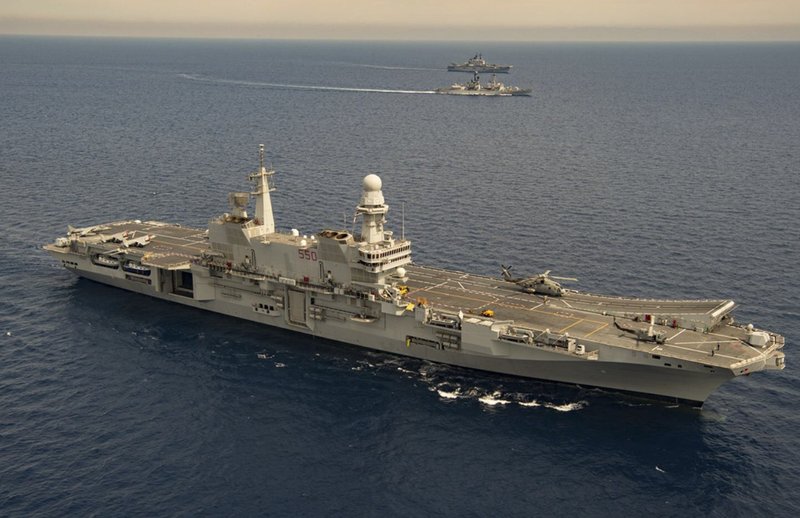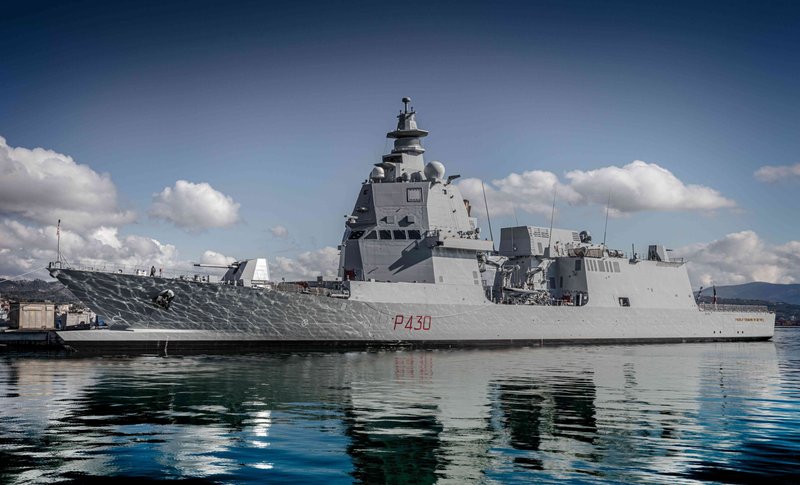Power projection or sales pitch? Why the Italian Navy is heading for the Pacific
The past year has seen a significant increase in political activity and naval deployments by Italy in the Indo-Pacific area. Yet the country does not have any overseas territories – and therefore national interests – in the region. So why this sudden renewed interest?
Although it does not make the news headlines as often as some of its European counterparts the Italian Navy is a busy and important force in its area of operations... Continues below
Newsletter Sponsor:

Above: Arguably, nothing projects power like a carrier strike group. Italy intends to send the Cavour, plus accompanying ships yet to be determined, to the Indo-Pacific in 2024. (Photo: Italian Navy)
It is actively ensuring the security of what Rome calls ‘the enlarged Mediterranean’ – from Gibraltar to the Gulf of Aden and from the Middle East to the north Mediterranean. It participates regularly in Operation Atalanta and, along with other European navies, has been engaged in trying to bring stability back to the Red Sea amid the latest developments with Houthi rebels in the region.
These areas of operation are perfectly in line with its latest multi-annual programming document – published last year and covering the 2023-2025 period – which states: ‘In this complex framework, international defence commitments are divided into various areas of interest: Mediterranean, Europe, Africa, Middle East and Northwest Indian Ocean.’
Yet in April 2023, the Italian Navy’s Thaon di Revel class frigate (according to some, see below) Francesco Morosini set sail for a five-month deployment to the Indo-Pacific. The itinerary was filled with numerous stops that included both commercially motivated visits – such as participation in IMDEX in Singapore and LIMA in Malaysia – and diplomatic calls to the likes of India, South Korea and Japan.

Schiebel – leading the unmanned evolution
Furthermore, during the Surface Navy Association symposium in Washington earlier in January, Italian naval attaché Capt Marco Bagni announced that this year Italy would deploy the Cavour Carrier Strike Group to the Indo-Pacific.
This would include a destroyer – Italy tends to refer to its biggest frigates as ‘destroyers’ – a frigate and a logistics support ship. Details as to these vessels’ classes have not yet been released.
During the same event, Bagni also announced that his navy would participate this year, for the first time ever, in the RIMPAC multinational exercise.
So, what is going on? Why the sudden interest from a seemingly distant country in the Indo-Pacific, when the latest programming document does not even mention the region?
Italian political commentators have noted that there is an increasing desire for the country to become more actively involved in the NATO and European presence in the Indo-Pacific. This is meant to be a show of force against an increasingly assertive China and its navy.
It is hard to see how occasional deployments to faraway lands could have any noticeable geopolitical impact. On anyone. But then again, one could argue that every little helps, and that if enough Western navies become involved in the region, Beijing will eventually have to factor in facing more adversaries who have been training together (eg during RIMPAC).
Other articles in this newsletter:
Throwing new light – could directed energy weapons tip the Red Sea balance?
Who wants to build ships? Why US yards face a workforce crisis
But it is more likely that Italy’s involvement in the region is mostly grounded in commercial interests.
In March 2023, Prime Minister Giorgia Meloni visited India and signed a bilateral defence agreement. She reportedly commented: ‘Today we are establishing a bridge between Italy and India, opening a new chapter, namely defence cooperation for production and development in this sector, which can benefit both countries.’
Additionally, Italy, via Leonardo, is already part of the Global Combat Air Programme (GCAP) together with BAE Systems in the UK and Mitsubishi Heavy Industries in Japan. In fact, it is openly seeking to strengthen relations with Tokyo.
Finally, commentators in Italy have noted that the Francesco Morosini’s deployment to the Indo-Pacific was also an opportunity for Italy to showcase Fincantieri’s Thaon di Revel design. It features a 6,270t displacement and 9,200km range at a cruising speed of 15kt. Armed with two OTO Melara guns, one 127mm and one 76mm, and optimised for Vulcano and Davide/DART guided munitions, plus launch cells for Aster and Teseo missiles, the ship straddles the loose boundary between OPV and frigate.

Above: Italy is hopeful of Thaon di Revel-class sales in the Indo-Pacific, but there are few suitable open requirements among the region’s navies. (Photo: Italian Navy)
Yet Italy might be a little late to the shopping party. Currently only Thailand is seeking to procure new frigates, although it is worth noting that Indonesia is reportedly 'in talks' with Italy for two Thaon di Revel class ships.
So while it would be good to add a bit of diversity to the current offering in the region – shaking up current established European players such as Naval Group and BAE Systems – it might be the case that Italy is seeking to enter a saturated market, both commercially and politically.
Don't want to miss out on future Decisive Edge content? Make sure you are signed up to our email newsletters.











